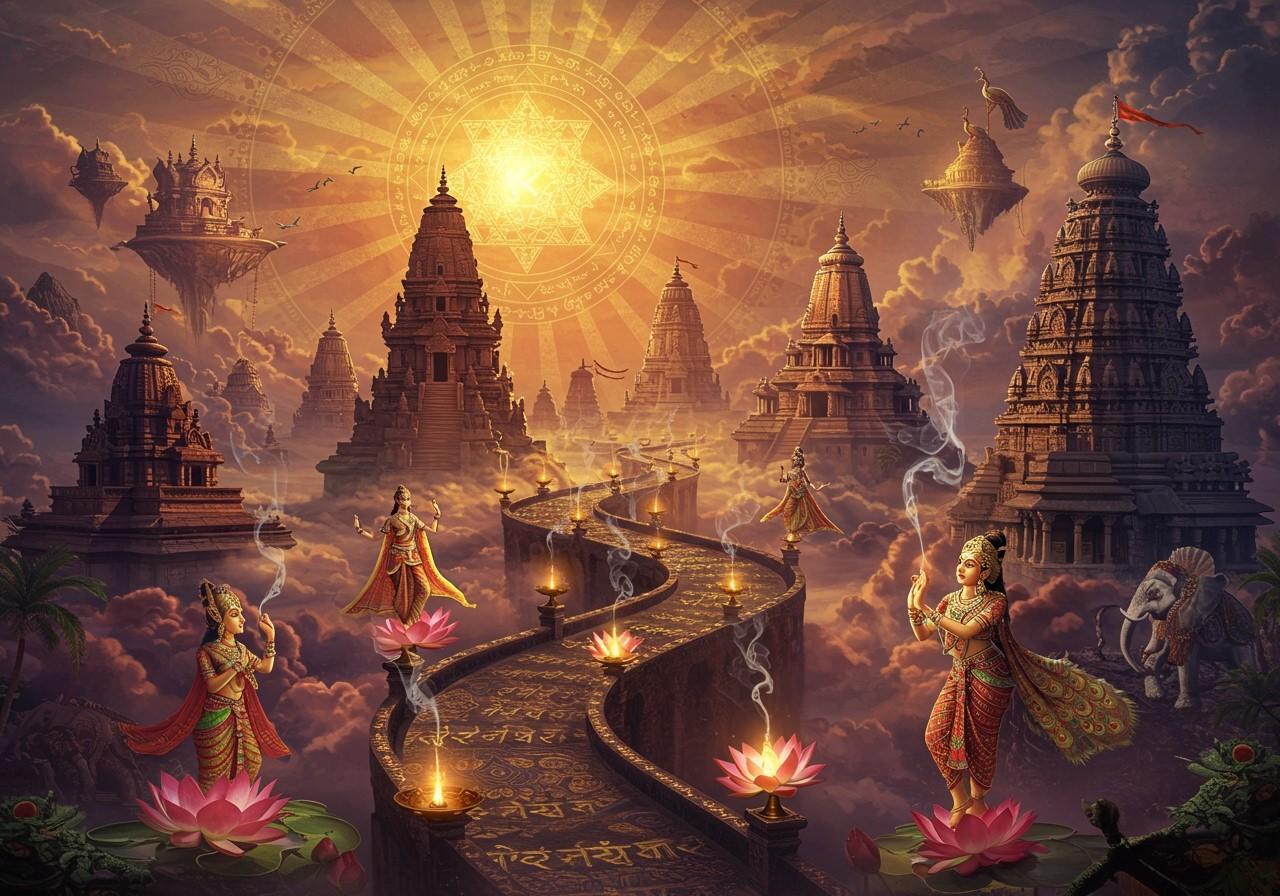
Hinduism, one of the world’s oldest religions, has profoundly impacted various cultures across Asia. This blog post delves into the historical dissemination of Hinduism, exploring its influence in regions like Indonesia, Bali, and Southeast Asia. We’ll examine how cultural exchanges, trade routes, and historical events facilitated the spread of Hindu beliefs and practices.
Hinduism in Indonesia: A Historical Overview
Arrival of Hinduism in Indonesia
Hinduism’s presence in Indonesia, particularly in Java and Sumatra, dates back to the 1st century CE. Indian traders and missionaries, traversing maritime routes, introduced the religion to the region. These early interactions laid the foundation for the integration of Hindu beliefs into Indonesian society.
The Role of Empires in Spreading Hinduism
- Srivijaya Empire (7th-14th Century): This powerful maritime empire, known for its extensive trade networks, played a key role in disseminating Hindu culture throughout the region. Its control over vital sea lanes facilitated the movement of religious ideas and practices.
- Majapahit Empire (13th-16th Century): Succeeding Srivijaya, the Majapahit Empire continued to promote Hinduism through art, architecture, and religious patronage. The empire’s influence solidified Hinduism’s place within Indonesian society.
Architectural and Literary Influences
- Prambanan Temple: This magnificent temple complex, dedicated to the Trimurti (Brahma, Vishnu, and Shiva), stands as a testament to the deep-rooted Hindu artistic and religious influences in Java. Its intricate carvings and towering structures reflect the grandeur of Hindu temple architecture.
- Hindu Epics: The Ramayana and Mahabharata, two of Hinduism’s most important epics, became woven into local folklore and performing arts. These stories resonated with Indonesian audiences, further embedding Hindu narratives within the cultural landscape.
- Sanskrit’s Influence: The Sanskrit language, integral to Hindu scriptures and rituals, made a significant impact on Indonesian literature and inscriptions. Its presence highlights the cultural exchange that accompanied the spread of Hinduism.
Decline and Continuing Influence
While the rise of Islam in the 14th century led to the decline of Hinduism’s dominance, remnants of Hindu practices continue to enrich contemporary Indonesian culture. Rituals, festivals, and cultural expressions still bear witness to Hinduism’s historical significance.
Bali: A Bastion of Hinduism
Hinduism’s Arrival in Bali
Hinduism arrived in Bali through Javanese influence between the 10th and 11th centuries. Remarkably, Bali remains a stronghold of Hinduism amidst a predominantly Muslim Indonesia, showcasing the resilience and adaptability of the religion.
A Unique Synthesis of Traditions
Balinese Hinduism represents a unique blend of Hindu beliefs and indigenous traditions. This syncretism has created a distinct form of Hinduism that is deeply intertwined with Balinese identity.
Sacred Temples and Cultural Impact
- Pura Besakih (Mother Temple): Considered the most important temple in Bali, Pura Besakih is a complex of 23 separate temples located on the slopes of Mount Agung. Its sacred status reflects the central role of Hinduism in Balinese life.
- Tanah Lot Temple: Perched on a dramatic rock formation in the sea, Tanah Lot Temple is another significant site of worship. Its stunning location and cultural importance make it a popular destination.
Hinduism permeates Balinese art, dance, and architecture, shaping the island’s cultural identity.
Colonial and Contemporary Practices
While Dutch colonial rule impacted Balinese Hinduism, it also inadvertently contributed to the preservation of certain practices. Today, major festivals like Nyepi (Balinese New Year) and Galungan are widely celebrated, demonstrating the enduring vitality of Hindu traditions in Bali.
Hinduism in Southeast Asia: Temples, Trade, and Transformations
Dissemination through Trade and Conquest
Across Southeast Asia, including regions like Cambodia, Thailand, and Vietnam, Hinduism spread through a combination of trade, cultural exchange, and, at times, conquest. Indian traders, priests, and merchants established trade routes, settled in the region, and introduced Hindu traditions, leading to a fusion of local beliefs with Hindu practices. This cultural exchange significantly influenced the region’s civilization, culture, art, and architecture.
The Rise and Fall of Hindu Kingdoms
Indian traders and rulers played a pivotal role in establishing Hindu kingdoms such as Funan and Champa. These kingdoms fostered the growth of Hindu culture and political structures, leaving a lasting impact on the region.
Architectural Marvels
- Angkor Wat (Cambodia): This magnificent temple complex stands as one of the largest religious monuments in the world, a testament to the architectural prowess and religious devotion of the Khmer Empire. Its intricate carvings and vast scale showcase the grandeur of Hindu temple architecture.
- My Son Sanctuary (Vietnam): This UNESCO World Heritage site features a cluster of ancient Hindu temples constructed by the Champa kingdom. The sanctuary offers a glimpse into the rich history and architectural traditions of Hinduism in Vietnam.
Cultural Influences and Syncretism
Hindu epics like the Ramayana and Mahabharata profoundly influenced literature, performing arts, and storytelling traditions in Southeast Asia. The interaction of Hinduism with Buddhism led to the emergence of unique syncretic traditions, blending elements of both religions.
Decline and Contemporary Remnants
The rise of Buddhism and Islam contributed to the decline of Hinduism’s prominence in several regions. However, festivals like Diwali and various rituals still reflect the enduring influence of Hindu traditions in Southeast Asian cultures.
Poojn.in: Supporting Hindu Traditions Across Asia
Poojn.in, India’s leading online store for cultural goods and services, is dedicated to supporting Hindu practices across Asia. We offer a wide range of products and resources for devotees, including:
- Sacred Beads and Malas: Find authentic rudraksha, Tulsi, and bel malas for your daily prayers and meditation practices. Our collection includes a variety of materials and styles to suit your preferences.
- Incense and Dhoop: Create a sacred atmosphere with our selection of traditional incense and dhoop. We offer a variety of fragrances to enhance your puja rituals.
- Murtis and Deities: Find beautifully crafted murtis of Hindu deities for your home altar. Our collection includes various sizes and materials, allowing you to choose the perfect representation for your worship.
- Exploring Hinduism: Core Beliefs and Practices
- Hindu Gods and Goddesses: A Complete Guide
Visit www.poojn.in to explore our complete collection and learn more about Hindu traditions.
Conclusion
The spread of Hinduism across Asia is a testament to its adaptability and enduring appeal. From the grand temples of Indonesia and the unique traditions of Bali to the cultural remnants in Southeast Asia, Hinduism’s influence continues to shape the religious and cultural landscape of the region. By understanding the historical journey of Hinduism, we can gain a deeper appreciation for the rich tapestry of traditions that make up our world.


